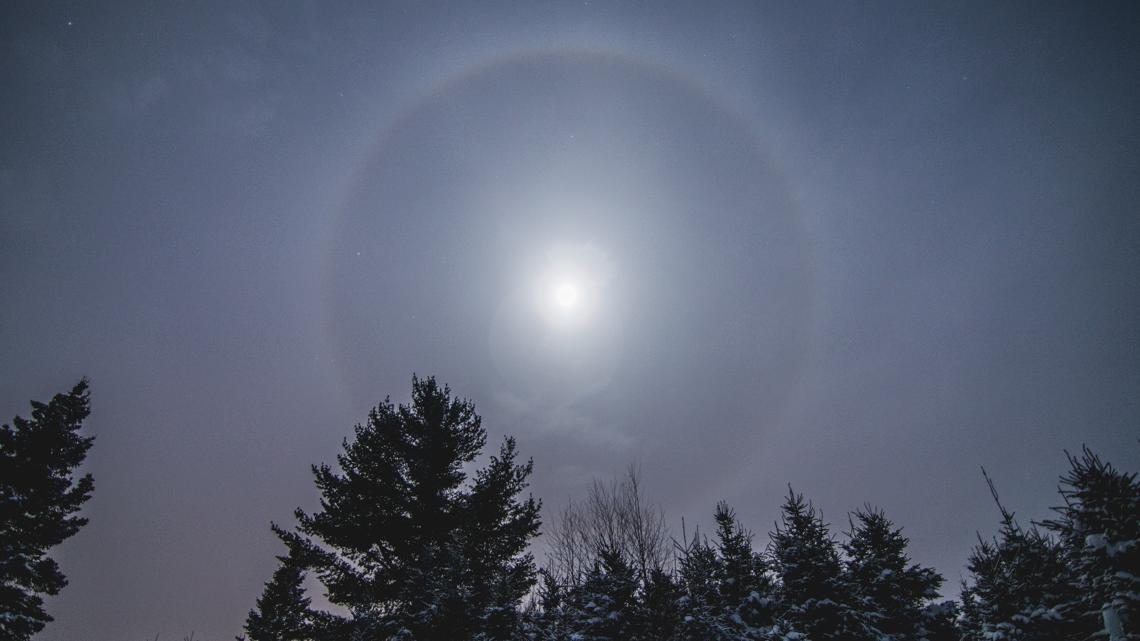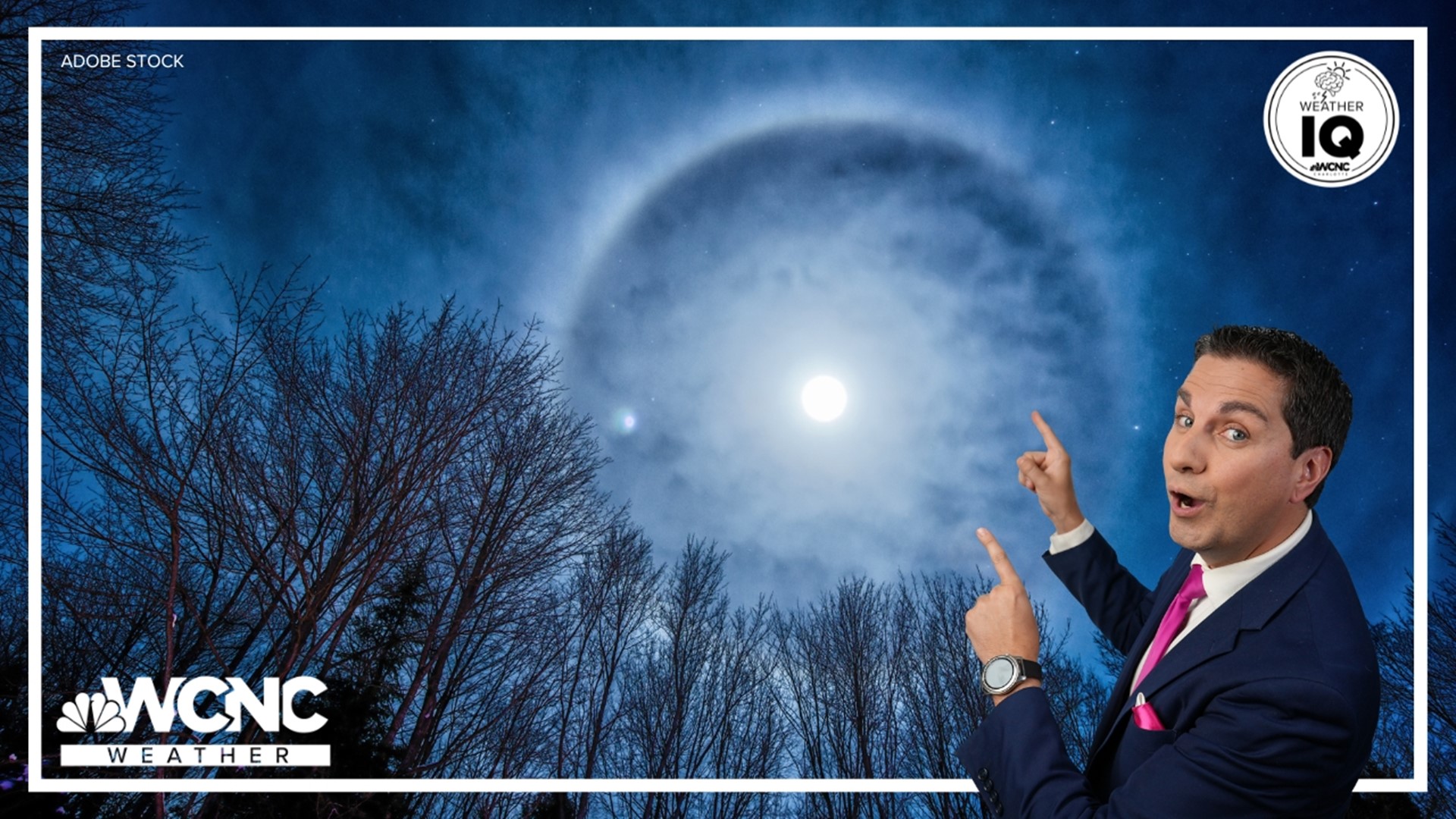CHARLOTTE, N.C. — For centuries people have been watching the weather trying to understand the mystery of the scientific happenings. Their observations were passed down through sayings and rhymes. This has created what is known as weather folklore.
Let’s raise your Weather IQ on whether some of this lore is fact or fiction.
“When leaves turn their back ‘tis a sign it’s going to rain”
FICTION
While all folklore is based on some truth, leaves turning upside down can also happen on a clear, windy day with no storm chances. This is most common during the summer when high humidity can soften the leaves. In the case of the Maple leaf, they can curl slightly. This makes them flip easier in the breeze. So even though a storm's outflow often turns leaves in the warmer months, it is just not an accurate predictor of the weather to come.
RAISE YOUR WEATHER IQ: Climate change's impact on fall foliage
“A ring around the sun or moon, means rain or snow is coming soon”
PARTIALLY TRUE


A ring appears around the sun or moon when upper-level cirrus clouds, which are comprised of ice crystals, refract the light.
Cirrus clouds are often the precursor to an approaching weather system. These thicker clouds mean rain or snow could be coming soon. During the cooler season, it could also be a sign of an approaching tropical cyclone or a mid-latitude cyclone.
However, cirrus clouds can be isolated from a grander storm system. An area may only see the upper-level cirrus clouds and could bypass any precipitation from the core of the weather system. So the ring is not a perfect precursor for rain.
“You can tell the temperature by counting a crickets chirps”
SURPRISINGLY FACT (BUT THERE IS SOME MATH INVOLVED)
Crickets chirp faster when it is warm and slower when it is cold. So when a cricket is chirping consistently:
- Count the chirps for fourteen seconds, then add 40.
This is a part of Dolbear's Law, which was written in 1897 by Amos Dolbear, an American physicist and inventor.
Not all crickets are equally weather-savvy. The snowy tree cricket, also known as thermometer cricket, is the best bug thermometer. This was the cricket believed to be used for Dolbear's study. However, the common field cricket is a close second.
There are many other weather lore, including "red skies at night, sailors delight," but we will save that one and some others for another upcoming Weather IQ.
Contact Chris Mulcahy at cmulcahy@wcnc.com and follow him on Facebook, X, Instagram and TikTok.
WCNC Charlotte’s Weather IQ YouTube channel gives detailed explainers from the WCNC Charlotte weather meteorologists to help you learn and understand weather, climate and science. Watch previous stories where you can raise your Weather IQ in the YouTube playlist below and subscribe to get updated when new videos are uploaded.

